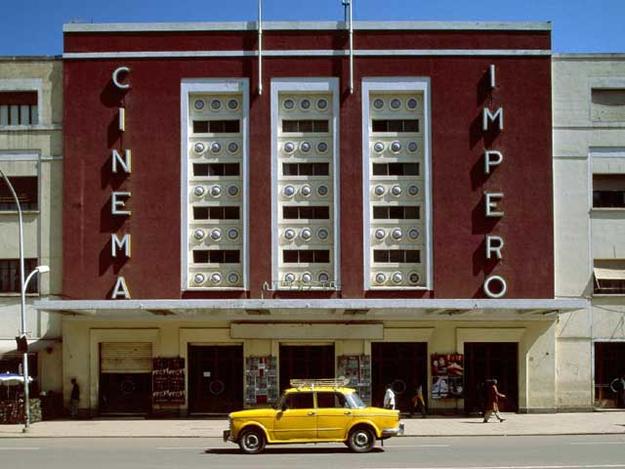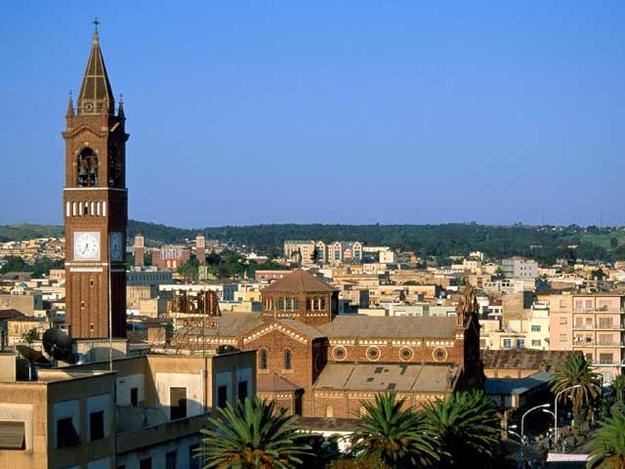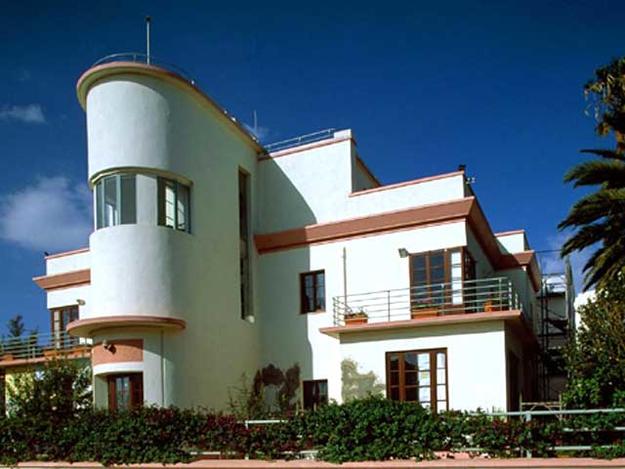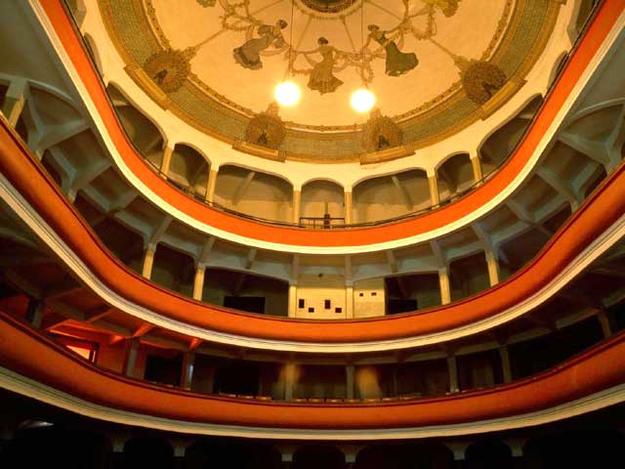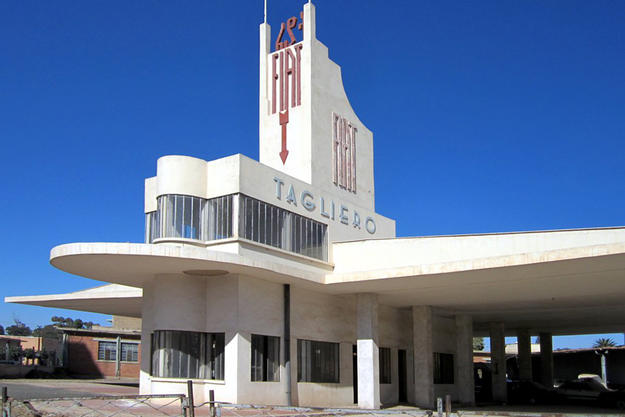Asmara Historic City Center
2006 World Monuments Watch
Despite ancient roots, Asmara, the capital of Eritrea, is most famous for its 20th-century architecture. After becoming the capital of the Italian colony in the late 19th century, the city grew to become a sizeable town by the 1920s. In the 1930s, the city grew substantially as tens of thousands of Italians moved to the region in preparation for Mussolini’s planned invasion of Ethiopia. In this environment, the city became a kind of experimenting ground for modern architectural designs. Thousands of buildings were built in various styles, including Futurist, Novocento, Rationalist, and Art Deco, part of the grand city plan that also included boulevards and wide sidewalks.. The majority of the structures in the historic core date from 1935 to 1941, by which time Asmara was the main city of Mussolini’s empire in Africa. Some of the best examples of the bold, whimsical Modernist structures include the aircraft-inspired Fiat Tagliero gas station built in 1938 with a freestanding concrete cantilever roof, and the Cinema Impero, built in 1937 with a circuit-board-inspired façade. The buildings in the historic core of Asmara have remained relatively untouched since the 1940s. Intermittent unrest between Mussolini’s defeat in Africa and independence in 1991 prevented large-scale construction in the capital. Following independence in 1991, the government of Eritrea established a program to preserve this unique architectural heritage amongst pressures to resume development.
Since the Watch
After inclusion on the Watch, the city center of Asmara received a wealth of international attention, and with assistance from the World Bank, the government established a Historic Perimeter to protect the architectural heritage. Shortly afterward, Asmara’s early Modernist architecture was featured in a traveling exhibition and workshop, a documentary film on its architectural merits, and a number of high profile travel articles featuring this preserved urban landscape. Although a comprehensive catalogue of the most important buildings in town was created, Eritrea has been unable to continue its progress in the development of guidelines for the management of its architectural heritage and so far there is no finalized masterplan for the conservation of the historic core of the city. Asmara represents one of the most concentrated and intact assemblages of Modernist architecture anywhere in the world. Listed as a UNESCO World Heritage Site in 2017, the urban design within the Historic Perimeter has remained untouched since its original implementation and subsequent evolution throughout the 1930s. The buildings are superlative examples of various styles of Modern architecture in a preserved urban landscape.

